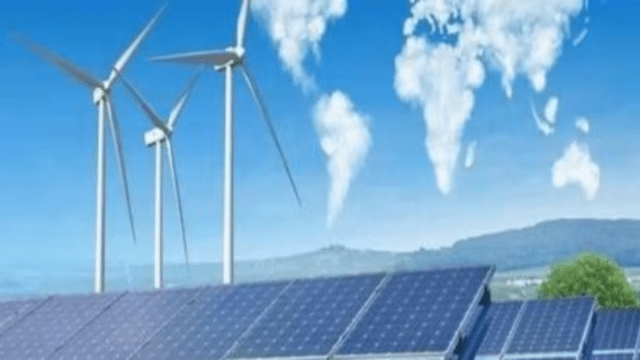India could generate up to 9.2 lakh TWh from its blue renewable energy sources: INCOIS
The Integrated Ocean Energy Atlas provides estimated values of renewable energy that can be generated from either individual or integrated blue renewable sources at potential sites along the coast.
 According to the estimates, the Indian Exclusive Economic Zone (EEZ) holds the potential to generate about 9.2 lakh terawatt hours (TWh) from multiple blue renewable energy sources. (File Photo)
According to the estimates, the Indian Exclusive Economic Zone (EEZ) holds the potential to generate about 9.2 lakh terawatt hours (TWh) from multiple blue renewable energy sources. (File Photo)Researchers at the Hyderabad-based Indian National Centre for Ocean Information Services (INCOIS) have developed the Integrated Ocean Energy Atlas, which maps sites along India’s coastline with the potential to generate energy from blue renewable sources like tidal waves and currents.
M Ravichandran, Secretary, Ministry of Earth Sciences (MoES) launched the atlas online last week. It provides estimated values of renewable energy that can be generated from either individual or integrated blue renewable sources at potential sites along the coast.
According to the estimates, the Indian Exclusive Economic Zone (EEZ) holds the potential to generate about 9.2 lakh terawatt hours (TWh) from multiple blue renewable energy sources.
The mapping was done for sites with a resolution of 5 km x 5 km located along the country’s EEZ, which covers up to 220 km from the coast. India has a vast coastline of over 7,000 km that offers ample scope for energy generation, especially in the backdrop of India’s efforts to adopt and strengthen its blue economy. This is a first-of-its-kind atlas in the world offering an integrated and individual assessment of blue energy reserves across India’s EEZ.
Speaking about the need for such an atlas, T Srinivasa Kumar, director of INCOIS, said, “Off-shore renewable energy sources like sun, wind, tides, salinity gradient, etc. are not only important but have remained largely untapped. If we can use them, it will significantly aid in the energy transition towards a blue economy.”
To tap these blue renewables, the first step is to know what scope each of these sources—the sun, tides, winds, waves, salinity gradient, currents, and ocean thermals across the coastline and the islands—offers.
To understand this potential, researchers assessed potential energy generation based on the past 20-30 years of available data obtained from weather models, in-situ (on-site), and satellites. The atlas offers daily, monthly, and annual energy generation potential from each source as an integrated estimate.
Taking to the Indian Express, T M Balakrishnan Nair, head of Ocean Modelling, Applied Research and Services at INCOIS, said, “This will be useful for industries working in the renewable energy sector for planning and decision making.”
The atlas has also factored in the fishing zones, shipping lines, cyclone-prone zones, eco-sensitive zones, ports, and harbours- all of these are vital for industries ahead of planning their infrastructure for energy generation.
“This is an important product and a step towards achieving a net zero goal. The atlas will help understand the available energy potential sites,” said MoES Secretary Ravichandran.
“We are now able to guide and suggest to industries keen to invest in this sector,” he added.
This information will also be helpful for policymakers and researchers, who can gauge the energy generation estimates and design better ways to harness the rich blue energy for the country.
Ocean data considered while preparing the atlas revealed that coasts along West Bengal and Gujarat were suitable for energy from tidal waves, whereas salinity gradient was found suitable over Andhra Pradesh and West Bengal.
The MoES secretary urged INCOIS to expand this assessment to other countries in the Indian Ocean and get a holistic picture of this region.
Anjali Marar is a science communicator at Raman Research Institute.







